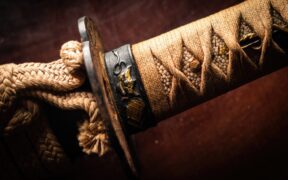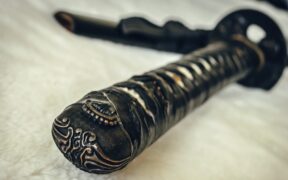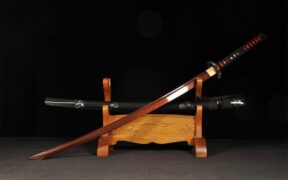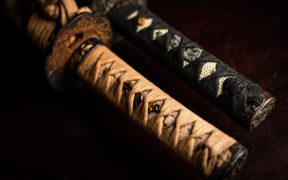Our content features commercial links to our products, committed to transparent, unbiased, and informed editorial recommendations. Learn More
How to Choose the Perfect Katana Handle
NO AI USED This Article has been written and edited by our team with no help of the AI
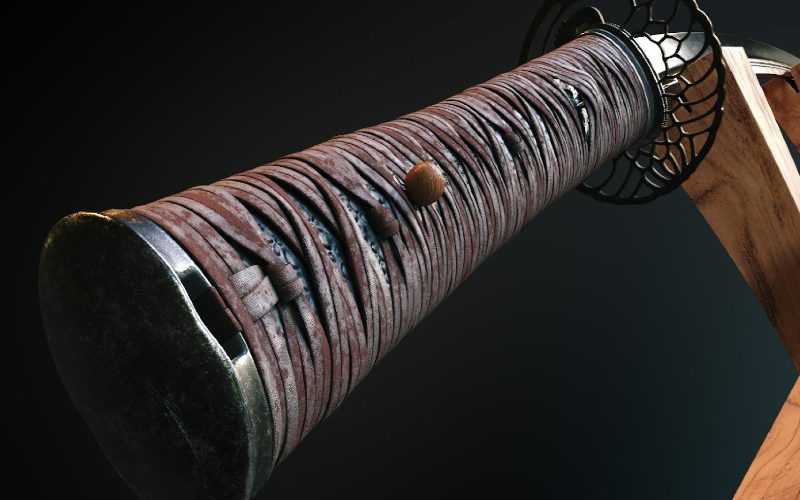
The Katana is a Japanese samurai sword with a single-edged, curved blade, a round or square guard, and a long handle that can fit both hands. The unique handle is one of the reasons why the Katana is considered to be the most dangerous Japanese sword.
Finding the right handle will assist in using a Katana like a real martial arts expert. In this article, we’ll discuss what the Katana handle looks like, what it’s made of, and how you can use some methods to choose the correct Katana handle for you.
Characteristics of the Katana Handle
The Katana handle is highly recognizable because of its unique characteristics.
Material
The Katana handle is mainly made of wood. Of course, some cheaper modern Katana handles are made from plastic too, but the wood offers much better grip and sturdiness.
Length
The average Katana handle is 25 – 30 cm long, and the blade is 60 – 70 cm long. The handle length is proportionate to the Katana blade, which is ⅓ of its total size.
The handle’s longer length will enable you to wield the Katana much easier. In addition, the ability to use both hands instead of just one produces a lot of power and a firm grip.
Weight
The weight of the Katana handle is usually 300 – 400 grams. This makes it very light to use while offering a fantastic grip and giving more power and strength to the user. So when looking to buy a handle, make sure that its weight falls in this range.
Curvature
The Katana handle does have a very soft curvature. Although the handle might seem very curved from a distance, that isn’t the case. The handle is mostly straight, and the Katana only starts to curve from the Tsuba (Katana’s guard).
Parts of the Katana Handle – Tsuka
The Tsuka is the Japanese word for the Katana handle. Many swordsmiths in Japan and worldwide take pride in creating these unique handles. The main parts of the Tsuka consists of the following:
Tsuka Ito
The patterned wrap around the wooden handle is called the Tsuka Ito and is made of cotton or silk. The smooth piece of wood is wrapped tightly with this colorful string to increase friction and make it easier to hold. This wrapping process is called Tsukamaki and is a skill that takes time and practice to learn and master.
Same or Samegawa
The layer under the cotton is the Same or Samegawa (string). The layer is made of leather, stingray skin, or the belly of a shark, whereas some cheaper Katanas consist of plastic. Most of the time, the Same is white or a color that stands out from the Menuki so it can be seen.
Menuki
These are small, intricate symbols and sculptures stuck on top of the wrapping of the ray-skin Menuki. These works of art show animals, flowers, parts of nature, or personal symbols that will be important to the person who will own the sword in the future.
Surprisingly, these pieces of decor are also very useful! When the surface is bumpy, it’s easier to hold. But if the handle is too polished and smooth, like sanded wood, you may lose your grip if your hands are sweaty.
Fuchi
The Fuchi is the metal tube between the handle and guard that holds the Tsuka and the other parts together. It is shaped like a nail and placed in the holes that are made in the same area as the blade and handle.
Nakago
The Nakago (tang) is the hidden part of the Katana blade under the handle. This is where famous swordsmiths often write their names or signatures.
Kashira
The Kashira is the Katana’s end cap, also called the pommel. It’s well-made with strong materials and can be used to hit someone in the head when they get too close.
The Kashira is a very large piece of decor with a small hole for the Makidome and holds the handle’s wrapping.
Makidome
Makidome is the last step in assembling the Tsuka-Ito silk (the patterned wrap) around the hilt. Most of the time, the Tsuka-Ito is tied in a knot at one side of the handle. When the wrapping goes through the Kashira, the pommel, and the last part of the Katana handle, it makes the end knot.
How to Find the Perfect Katana Handle for YOU
When looking for a perfect Katana handle, you can try a couple of these methods below to ensure that it is the right handle for you. The handle shouldn’t cause the Katana to feel awkward in your hands.
Method 1 – The Forearm Method
Measure your arm from your elbow to your wrist. That will give you a good idea of how long your Tsuka should be. Most Katanas are about the same size, so the length of their handles won’t vary by much. However, this method will give you good feedback and confirm the handle length you are considering.
Method 2 – Measure your Grip
Put your hands on the table and sit down. Place your palms on the table to form a 90-degree angle with the surface. Then put your fists together. Put one fist on top of the other, like you’re holding a sword. Add 3 to 4 inches. That will give you a good idea of how big your grip needs to be and how long the handle needs to be.
Method 3 – Try a Wooden/Bokken or Metal/Iaito Katana Handle
If you aren’t satisfied with the two methods mentioned above, look to purchase a wooden or metal prop Katana sword. There are many to choose from, and they are fairly cheap too!
Once you get a prop Katana with a wooden handle, hold it firmly with both hands and then with one hand. With a bit of trial and error, it is possible to measure how the length of the handle adapts to your hands. Once satisfied, look for a real Katana handle.
Bear in mind that the real Katana with a steel blade will be much heavier than the prop.
How does the Katana Handle affect the Katana Sword?
The Katana handle is great because it softens the strokes and provides an excellent grip. It is made in direct proportion with the blade, making it feel like it is an extension of your hand. You will never have a situation where the Katana will fly out of your hands.
The Katana handle was something that made the Japanese ninja and samurai possibly the deadliest medieval warrior. This was mainly because of the ability of the Katana handle to adapt to every type of fighting scenario.
Construction of the Katana Handle
The Tsuba of the Katana is made mainly from wood. It is crafted to be the same size as the metal handle of the Katana. The length of the Katana blade stretch from the beginning of the handle to the tip of the blade.
A hole is drilled inside the neck (right under the guard) of the Katana steel blade. Afterward, the Katana handle will be decorated with all the parts that are mentioned above. When completed, the wooden handle is added to the steel so that the hole overlaps the steel hole. A nail will secure them together.
Conclusion
The Katana handle is often overlooked but when looking for a high-quality Katana on the market, make sure to check out its handle first. It makes the Katana sword very flexible and easy to use. Without a good Katana handle, your experience with the sword may be poor and result in injury or breakage of the Katana itself.
